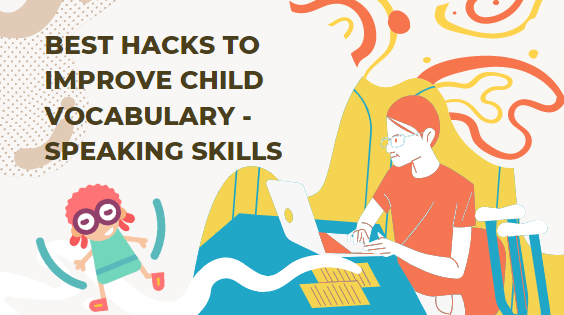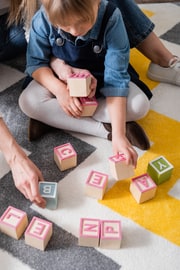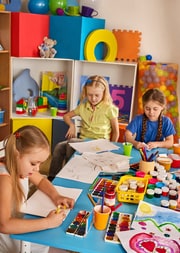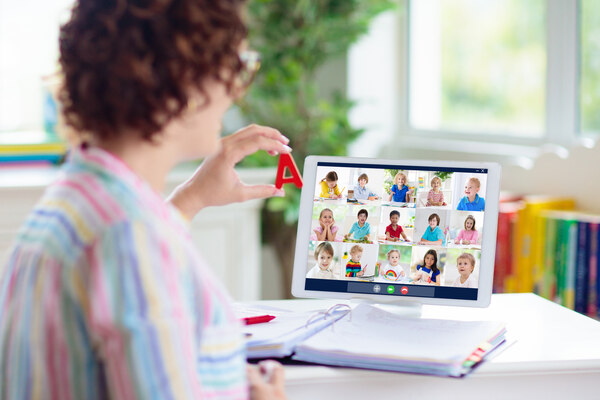Best Hacks To Improve Child Vocabulary – Speaking Skills
If your child is having trouble in picking up new terms and words quickly, chances are that you haven’t introduced them to the world of vocabulary at a younger age. At the age of 4, a child with perfect hearing ability has already heard up to 31 million words, meaning that the period of learning new words has already started.
On the other hand, studies have shown that children with hearing disabilities require more speech engagement in order to get the same benefits.
Being a parent, you need to focus on your child’s vocabulary from the very start to make them excellent readers and learners as they tend to pronounce the words more clearly than they already know how to say and read them.
So, if you haven’t done it yet, now is the best time to be prepared to work on improving his or her vocabulary.
A strong vocabulary is the foundation stone for quick understanding, debatable communication, and faster-reading speed.
Though it is not a common practice, still parents should normalize to give proper time to assist their kids to broaden their knowledge quickly.
It is easier said than done. You might be wondering how you can start working on it just now?
There are so many easy and simple exercises that might assist your kids to develop their vocabulary. Despite their obvious value, we often do not have time for it in the hustle-bustle of daily life.
Explore these often-overlooked hacks to help your child build an excellent vocabulary for the future. So, without further dragging, let’s jump straight into it!
Best hacks to improve child vocabulary
1. Don’t be afraid to use complicated words
As much as you want your kids to understand you, it doesn’t indicate you can’t use “complicated” words. Don’t be afraid to use phrases that a grownup would comprehend but that your kid won’t grasp.
Push your children to ask questions when they don’t grasp anything and be ready to explain. Your children will learn new words from you if you don’t dumb down your conversation.
2. Ask your child to tell a story
You may read a bedtime story to your child every night. As a matter of fact, this is a wonderful technique to improve one’s reading comprehension and vocabulary.
Sometimes, it is okay to put the book down and encourage your child to tell a story or just ask them how your day was. Then, let your child grab the controls and go wherever their brain takes them.
Use hypothetical questions to teach new vocabulary and topics as the story continues. With your encouragement, they’ll find new words to express themselves, and your recommendations will assist them.
3. Converse punctually
Another great hack to help your child’s vocabulary grow is to encourage him or her to speak more. Let them talk to people and open up with them. A child’s brain is continuously absorbing new information.
If they hear your voice more often, the more they will learn from you. Give your children repetitive opportunities to communicate and use their expanding vocabulary as they get older.
4. Gift junior dictionary
It might be challenging for a child to grasp even the most basic definitions in a dictionary because of the complex terminology. The best bet is to go with a reputable, basic junior dictionary that includes examples and animations for kids.
When a child doesn’t know the meaning of a new word or term, he or she can look it up in the dictionary for meaning. This is also a great approach to make them learn new things on their own.
5. Turn on the subtitles
While spending time with your child watching a movie or a series on television, turn on the subtitles. As a result, your child will be capable of reading complicated words and attempting to memorize their spelling.
Furthermore, the context provided by movies and television shows enables kids to better comprehend the definition of words in varying situations.
6. Use the building blocks technique
Using building blocks as a beginning point for educating children using simple words is a good idea. If you can, make it fun.
Ask the child to find the blocks that match the letters of a word you’ve written on a block. Start with easy phrases, such as the names of birds and colours, and then progressively increase the degree of difficulty.
7. Show them visuals
Regularly show visuals or animations of text to your child from newspapers, periodicals, storybooks, or the internet. It is much simpler for a child to make the connection between two things when they are shown a picture along with a new word.
It also actually strengthens the intellectual and analytical abilities in the children. In addition, images are way simpler to comprehend than text.
8. Let them write and speak out loud
Asking your child to write words or sentences which they found difficult is often the more neglected hack to boost up their vocabulary skills. This practice works great for primary passed kids as now they are learning to speak and understand the longer texts.
You can give them long sentences and ask them to rewrite them in their own words. They might take time to comprehend and paraphrase the texts correctly as they are constantly finding new terms and words to replace the text while keeping the same context.
You can make use of a paraphrase tool to see how many ways a text can be comprehended without losing the actual meaning. Once you have more ways in mind to rewrite a sentence, the better you can expose your child to new vocabulary.
Last but not the least, ask them to read the text out loud and let them find the errors and jargon.
9. Patience is key
You need to pay even closer attention to this last hack tool.
Let your child know that he or she is not alone if he or she does not understand anything. Whenever they lose track of a term, let them think back to when they first heard it.
Keep an open mind while educating them and give them more time to absorb the information. Use simple examples and motivate your kids to come up with their own perspectives.
What are the benefits of having a broad vocabulary?
1. According to studies, students who have a more robust vocabulary perform better academically.
A child from a middle-class home starts kindergarten understanding around 45 million words, but a child from a low-income background only knows about 13 million words when they begin school.
Children who come from families where there is a lot of speech and words are more likely to be able to read and do better in the classroom.
2. A well-developed vocabulary aids in the development of effective skills such as hearing interpretation, social interaction, written expression, and subject-specific knowledge.
So, working on your child’s vocabulary is a terrific idea to give your child a bright, confident, and successful future.
Conclusion

To sum it up, it is a never-ending yet wonderful journey to help your child develop his or her intellectual capabilities. Use the above-mentioned easy hacks and improve your child’s vocabulary faster than ever.
Lastly, when your child will be all grown up, they will appreciate you for the efforts you have put into making them a brilliant and sharp student.




 Amy has a wealth of parenting experience, from when she was an expectant mother to now being the parent of both a teenager and a preschooler. Her blog
Amy has a wealth of parenting experience, from when she was an expectant mother to now being the parent of both a teenager and a preschooler. Her blog 





 Explore the Safe Search Engine -
Explore the Safe Search Engine -